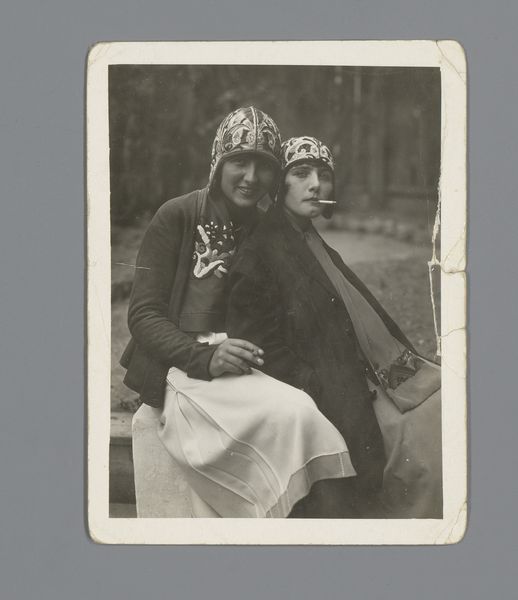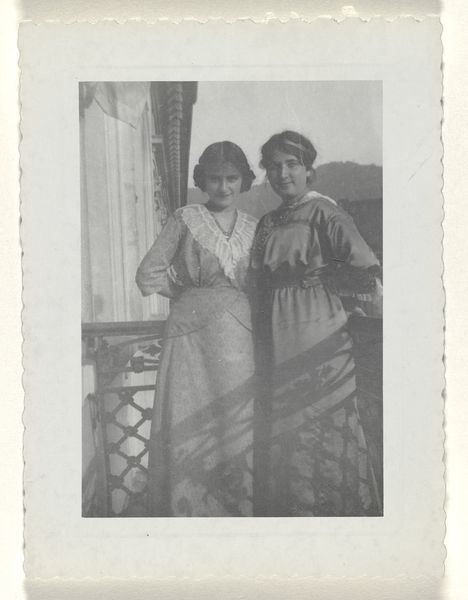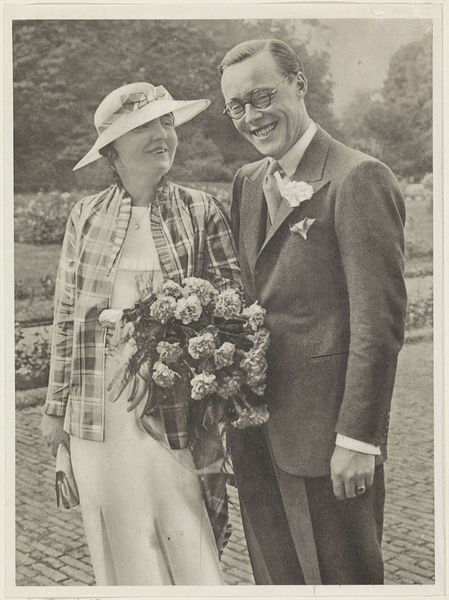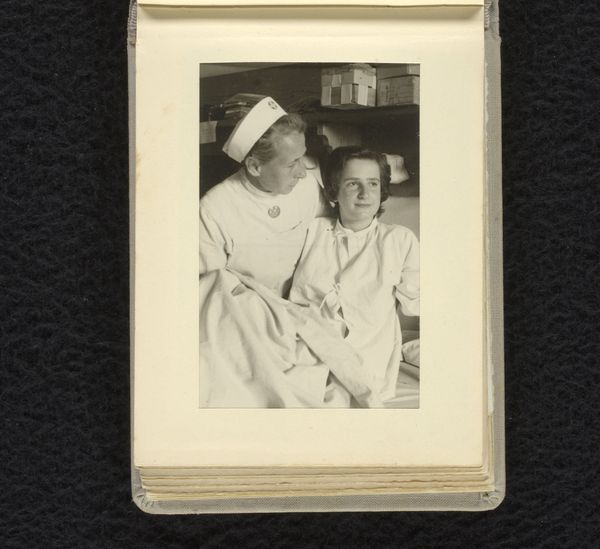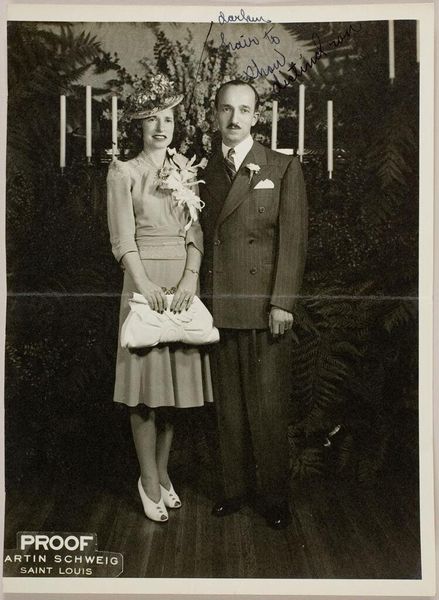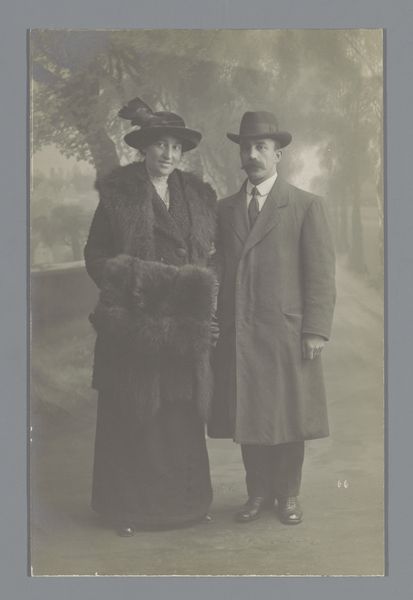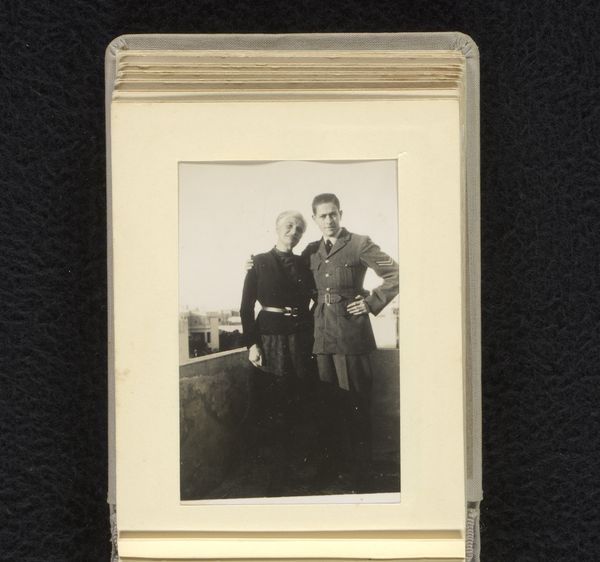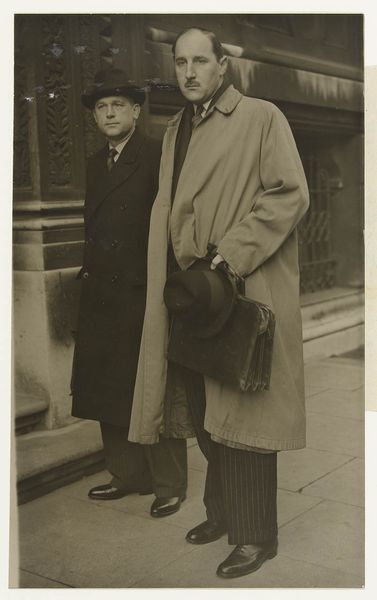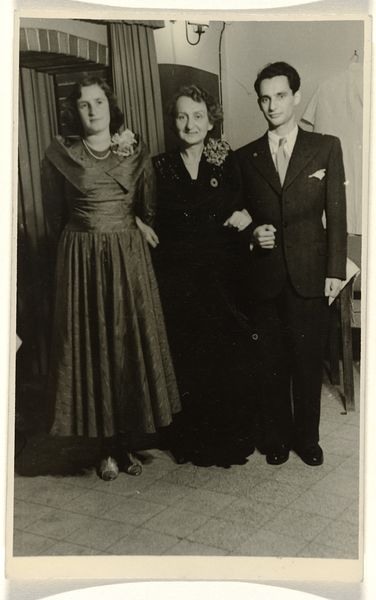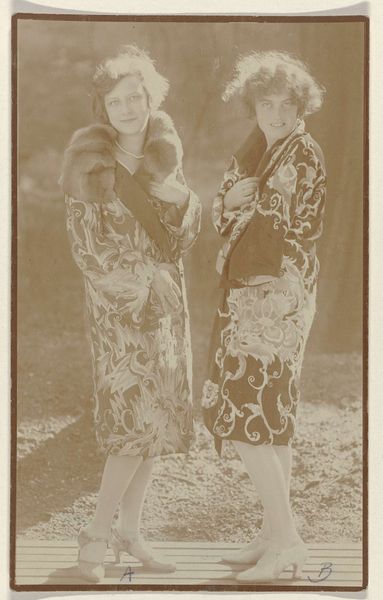
photography
#
portrait
#
art-deco
#
caricature
#
street-photography
#
photography
#
historical photography
#
cityscape
Dimensions: image: 10.5 x 6 cm (4 1/8 x 2 3/8 in.) sheet: 11.6 x 7 cm (4 9/16 x 2 3/4 in.)
Copyright: National Gallery of Art: CC0 1.0
Curator: Here we have an intriguing photograph from the 1920s, its creator remains anonymous, with a rather ironic title: "Practice Makes Perfect". Editor: I love it. It looks staged, like a film still almost, but it breathes with a certain…awkward charm. You can almost smell the gasoline and cheap tobacco. Curator: Absolutely. The material details give us a strong sense of time and place. The car, for instance, it serves as both a backdrop and a symbol of burgeoning consumer culture of the era. Then look closer at the garments—the fabrics, the tailoring, the way they are presented to suggest affluence despite what looks like very modest reality. Editor: It’s those cigarettes, isn’t it? The focal point of rebellion and leisure. Framing faces with this hazy insouciance is quite remarkable! You’ve got two figures dressed almost like twins trying out personas; it almost feels performative, a parody maybe? Curator: Possibly a nod to cross-dressing practices and queer performances, or perhaps a critique of gender roles subtly embedded within this staged scene. Given the era, these details likely signal social rebellion, especially since photography during that time had limitations on image circulation for those of diverse social backgrounds. Editor: It could just as easily be youthful experimentation though! I wonder what it took to capture this—was it planned meticulously or just happened? They seem relaxed but simultaneously tense—the artifice is wonderfully palpable. The texture feels…almost unsettling. Curator: Agreed, but the labor to get to this level of “unsettling” needs recognition. Remember photographic practices then—the technical challenges of posing subjects with lighting, arranging elements with the vehicle and outfits! "Practice Makes Perfect," takes on additional significance, doesn't it? It challenges the romantic view of artistry, showing how much production work factors into image construction and consumption Editor: Yes it is an odd duck, an awkward beautiful duck! I feel as if I've been let in on a wonderful secret, or that I am intruding upon someone else’s. Curator: Agreed, this is exactly how its production intersects themes about consumerism and social rebellion so fascinatingly. Thank you for joining me. Editor: A genuine pleasure, as always! It certainly opened up the shutter on my own understanding of how art functions with the human experience.
Comments
No comments
Be the first to comment and join the conversation on the ultimate creative platform.
